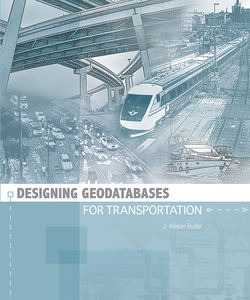Читать книгу Designing Geodatabases for Transportation - J. Allison Butler - Страница 42
Tracking events
ОглавлениеOne last aspect of geodatabase design needs to be addressed before moving to the specific needs of a transportation dataset. The ArcGIS Tracking Analyst extension provides a data structure called a tracking event. This extension presents a useful way to structure data needed for some transportation applications that do not actually use the Tracking Analyst extension, and it represents an application of the normalization process.
Tracking events come in two basic types: simple and complex. A simple tracking event is dynamic in that each row in the event table stores the position of the object being tracked. One table stores information about the object and its position. A simple tracking object is one that moves.
A complex tracking event can be dynamic or stationary. A complex tracking event has one table to describe the object and another table to store its position at each moment of observation. This design allows more information about the tracked object to be stored in a single row, and eliminates the redundancy of the simple tracking object table, where each row has the same descriptive data. A stationary complex tracking event is one where the object is fixed but other objects pass by it or an observed quantity changes over time. A rain gauge is an example of a sensor that could be treated as a stationary complex tracking object.
Figure 3.15 Tracking events The ArcGIS Tracking Analyst extension works with simple and complex tracking events. A simple event table contains everything needed to map the event’s progress. A complex event consists of a static table that describes the tracked phenomenon and a dynamic table describing temporal observations of each tracked event. Complex events may be stationary or dynamic.
Simple and complex dynamic tracking events have obvious applications in transit system databases and fleet-management programs, where monitoring a vehicle’s location is useful. For example, you could create a dynamic complex tracking event for each bus in your fleet. The temporal object table would describe buses, with one row for each bus. The temporal observation table would store the GPS-derived coordinates of each bus transmitted by an onboard automated vehicle location (AVL) unit. This function suggests applications where arrival times are forecast for metro trains at stations or online to tell users when the bus is approaching a nearby stop.
What may be less obvious is using complex stationary tracking events to store observations made over time at a single location. For example, traffic counts and crashes could be viewed as stationary complex tracking events. The temporal objects would be traffic monitoring sites and intersections. The temporal observations would be traffic volumes per unit of time and crashes that occur at random intervals.
